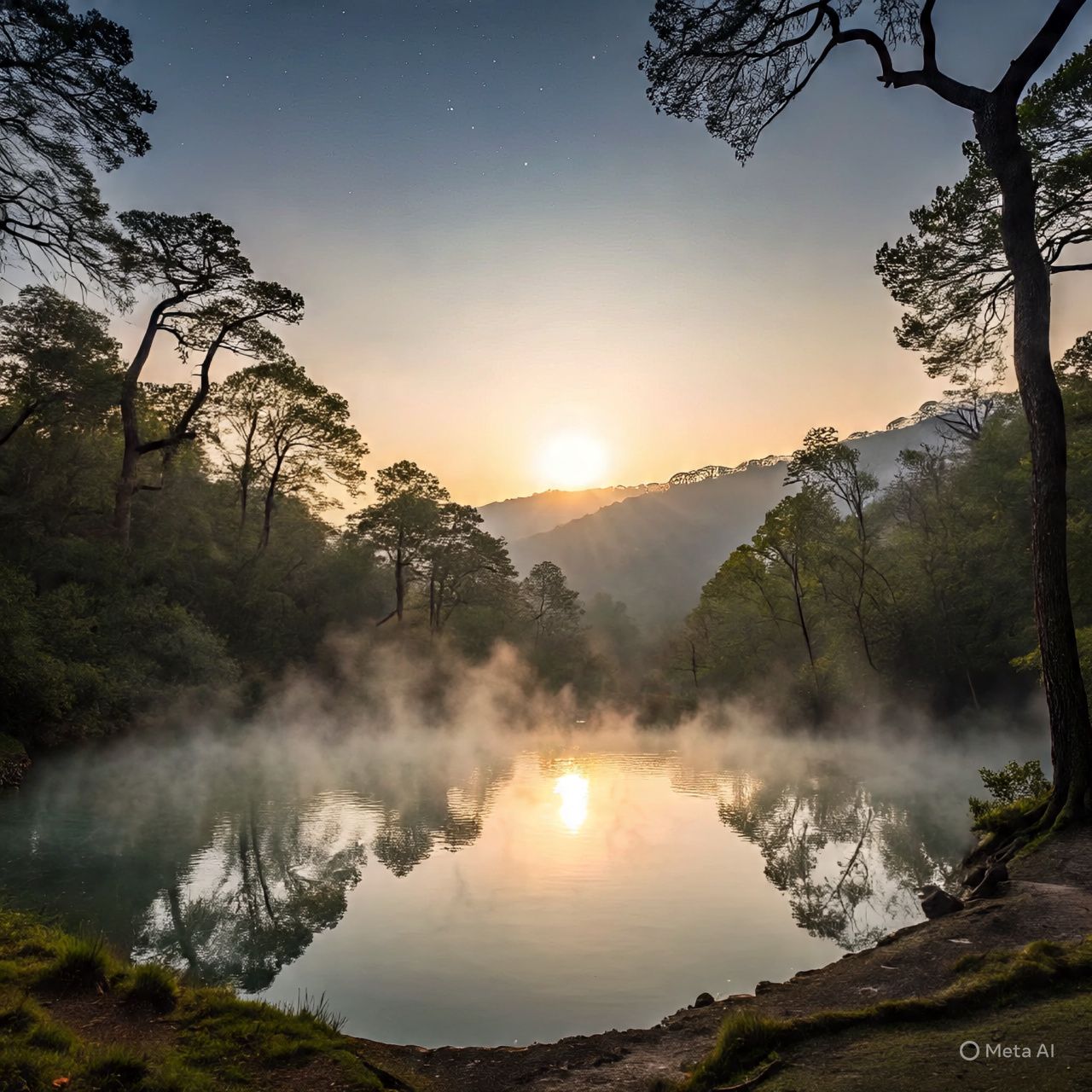Termas del Arapey: Aguas de la Renueva – Full Album + Bonus Tracks (52:27)
Free Download (320 kbps MP3): Aguas de la Renueva – Full Album + Bonus Tracks
An Immersive TATANKA Album Blending Ambient Soundscapes, Indigenous Voices, and the Spirit of Uruguay’s Legendary Hot Springs
“La Naturaleza vale por sí misma, independientemente de la utilidad o de los usos que le dé el ser humano.”
– Eduardo Gudynas — Uruguayan biologist, political ecologist, and senior researcher at the Centro Latino Americano de Ecología Social (CLAES), Montevideo
Google’s Deep Dive Podcast: The Healing Waters and Cultural Soul of Termas del Arapey
Termas del Arapey: Aguas de la Renueva — A Musical Journey Through Uruguay’s Healing Waters
Termas del Arapey, one of Uruguay’s oldest and most beloved thermal resorts, offers more than warm water; it is a landscape of memory, ritual, and renewal that invites artistic response. This article explores three intertwined subtopics that animate a TATANKA project inspired by Arapey: the springs’ cultural and ecological significance; the creative process of translating place into sound through field recordings, indigenous voices, and AI collaboration; and the community, tourism, and sustainable development opportunities that arise when art and local stewardship meet. Together these threads form the backbone of Arapey Echoes: Aguas de la Renueva, a project that honors place while using music to open new pathways for cultural dialogue, ecological attention, and mindful tourism.
Cultural & Ecological Significance of Termas del Arapey
Termas del Arapey is located in the Salto Department of northwestern Uruguay, where thermal waters have been celebrated since their discovery in the early 1940s. The springs are fed by deep subterranean aquifers, producing warm pools that historically attracted visitors for their perceived therapeutic properties and for communal gathering. Beyond tourism, Arapey sits in a landscape shaped by rural livelihoods, riparian ecosystems, and a layered human history that includes indigenous influences—echoes that appear in local language, ritual practice, and material culture. Ecologically, springs like Arapey are sensitive nodes: they connect groundwater, river systems, and the immediate biological communities that depend on consistent temperature and water quality. When artists engage with this place, it becomes essential to respect ecological boundaries and local knowledge systems to avoid extractive approaches that take culture or nature as mere raw material for aesthetic projects.
Guaraní and other indigenous threads in the Río de la Plata region provide an ethical and sonic vocabulary that can ground an album in deeper cultural resonance. Although Guaraní is most associated with Paraguay, variants and historical linguistic presences reach into parts of Uruguay, and local indigenous memories remain important cultural resources. Incorporating indigenous phrases, chants, or consultation—done with respect, proper attribution, and community permission—moves the project from appropriation toward partnership. Ecologists and thinkers in Uruguay have argued for a biocentric ethic that recognizes nature’s intrinsic value, a perspective that aligns naturally with creative work that seeks to celebrate rather than exploit the springs. By foregrounding local voices and ecological awareness, the project can model how art, science, and community stewardship can co-exist and enrich one another.
Historically, the development of thermal tourism has contributed to local economies while also reshaping landscapes—sometimes for the better, sometimes with costs that require careful governance. Arapey’s reputation as a healing place means that any artistic or tourism initiative must acknowledge the social patterns that surround the springs: pilgrimage-style visits at holidays, family traditions, and the seasonal rhythms of local businesses. Sensitively designed artistic interventions—sound installations, collaborative performances, and residencies—can provide economic opportunities for local craftspeople, guides, and cultural bearers. But these benefits are most durable when projects include revenue-sharing models, skill exchanges, and long-term commitments to local capacity-building rather than one-off promotional activities.
Creative Conception: From Field Recording to AI Collaboration
Turning Arapey into an album requires a blended creative methodology: field recording, traditional instrumentation, human voice, and AI-assisted sound design. Field recordings anchor the work in place—rain on leaves, the specific timbre of Arapey’s thermal runoff, local birds and human presence—granting immediate authenticity that no synthetic texture can fully replicate. Traditional instruments such as the charango and quena, when performed by local or regionally informed musicians, layer human technique onto these recordings and create dialogue between past and present. AI tools can then be used as co-creators: transforming, re-synthesizing, and suggesting harmonic structures that extend human imagination while preserving the character of the original material. The creative imperative is to let technology augment rather than replace embodied practice—AI should be a generous collaborator that helps reveal patterns and textures hidden in the field material without erasing the human trace.
When writing lyrics or composing vocal elements, intentionality matters: language choices (Spanish, Guaraní, bilingual fragments) should reflect local realities and the ethical commitments of the project. Collaborating with native speakers, cultural leaders, and local artists ensures linguistic accuracy and meaningful representation; it also opens pathways for shared storytelling and co-authorship. The production process should prioritize high-quality capture (good microphones, careful positioning) and transparent crediting—metadata and liner notes should list recording locations, dates, and local contributors. On the technical side, curating the sonic arc to mirror the healing cycle—from arrival and immersion to rebirth and return—creates a narrative flow that listeners can inhabit as a pilgrimage rather than just a playlist.
From a distribution perspective, modular releases help build sustained engagement: a central album landing page, track-by-track essays, short documentary videos of recording sessions, and social posts that spotlight collaborators and local partners all work together to amplify impact. Each digital asset should include clear provenance information—who recorded what, where, and under what cultural permissions—so audiences can appreciate the ethical dimension of the work. AI-generated pieces should be labeled and explained, both to be transparent and to educate listeners about the hybrid nature of the art. These practices strengthen trust and broaden the album’s reach beyond niche audiences to travelers, environmentalists, and culturally curious listeners.
Community, Tourism & Sustainable Futures
Artistic projects anchored in a living place like Arapey can catalyze local development when configured as partnerships rather than extractive showcases. A TATANKA project might include on-the-ground workshops for musicians and youth, joint performances with local ensembles, and limited-run artisan goods that return revenue to the community. Embedding local hiring and capacity-building into the project’s budget—not as an afterthought but as a core line item—creates tangible benefits and reinforces ethical storytelling. Additionally, tourism-driven engagement can be framed around slow, regenerative models: small-group listening experiences, seasonally timed residencies, and ecological interpretation walks led by trained local guides rather than mass-market events that strain infrastructure.
Sustainability also requires partnerships with municipal authorities, conservation groups, and regional tourism boards to align artistic programming with environmental regulations and community plans. Transparent ecological monitoring—baseline water-quality measures, visitor-impact studies, and clear waste management protocols—protect the springs and signal long-term stewardship. The project can also contribute to local narratives about the value of nature beyond economics, echoing arguments from Uruguayan ecologists who insist that landscapes have intrinsic worth and deserve rights-based protections. By anchoring the creative release to measurable stewardship practices, TATANKA can position the album as both art and advocacy.
Finally, the album offers possibilities for cultural diplomacy: linking Uruguay’s small, powerful heritage of thermal tourism with international conversations about regenerative travel, indigenous rights, and creative technology. Well-crafted storytelling on platforms such as LinkedIn, YouTube, and cultural journals can amplify local voices and attract respectful partnerships—scholar exchanges, festival invitations, and responsible tourism promoters. When the community is centered in every stage—from conception to release and revenue allocation—the album becomes a replicable model for how place-based art can contribute to thriving local ecosystems.
Flowing Forward: Where Waters, Music, and Memory Meet
Termas del Arapey is more than a destination; it is a living muse whose waters, histories, and communities invite a careful, ethical, and imaginative response. This article considered three essential subtopics—the springs’ cultural and ecological significance, the methods and ethics of translating a place into sound, and the project’s potential to support sustainable community development—and argued that each must be addressed with equal attention. When field recordings, indigenous partnership, and AI creativity are combined with transparent crediting, community investment, and ecological stewardship, the result can be both beautiful and responsible. Arapey Echoes: Aguas de la Renueva can thus act as a bridge: between artists and place, between technology and tradition, and between visitors and the long-term health of the land. By holding culture, ecology, and community in conversation, TATANKA’s project can model a path forward for place-centered art that heals as much as it celebrates.
Tracks/Lyrics
Llegada (Arrival)
Theme: Stepping into the sacred space; anticipation and openness.
Lyrics (in Castellano Spanish) prompt:
Describe the first moments of arriving at the thermal springs—sensory details of warm air, mist, distant water sounds, and a heart open to healing.
Music prompt:
Create an ambient introduction with gentle flowing water, soft drones, subtle wind sounds, and faint distant birdsong—slow evolving textures.
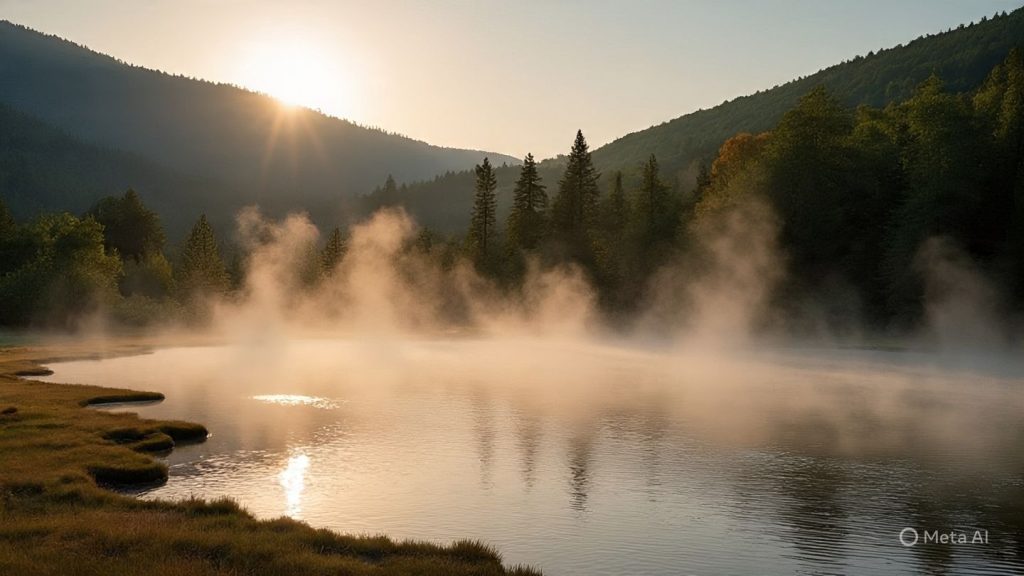
[Verse 1]
Camino despacio por senderos nuevos
Las piedras son cálidas bajo mis pies descalzos
No sé lo que busco
Pero algo me llama aquí
[Verse 2]
El vapor se alza como fantasmas blancos
Entre los árboles que guardan silencio
Mi corazón late más fuerte
Mientras el aire se hace tibio
[Chorus]
Y llego, llego
Con las manos abiertas
Y llego, llego
A este lugar que espera
Donde el agua susurra
Canciones que sanan
Y llego, llego
Con el alma desnuda
[Verse 3]
Escucho el murmullo del agua lejana
Como una madre que mece a su niña
Mis lágrimas viejas
Se mezclan con la brisa
[Verse 4]
Cada paso me acerca a la promesa
De calor que abraza sin preguntar
Dejo atrás el peso
De todo lo que duele
[Chorus]
Y llego, llego
Con las manos abiertas
Y llego, llego
A este lugar que espera
Donde el agua susurra
Canciones que sanan
Y llego, llego
Con el alma desnuda
[Bridge]
El vapor baila
Entre mis dedos
Como bendiciones
Que nunca pedí
[Final Chorus]
Y llegué, llegué
Con las manos abiertas
Y llegué, llegué
A este lugar que esperaba
Donde el agua me abraza
Con canciones que sanan
Y llegué, llegué
Con el alma desnuda
Inmersión (Immersion)
Theme: Submerging into the warm waters, surrendering.
Lyrics (in Castellano Spanish) prompt:
Write from the perspective of the body melting into warmth—muscles relaxing, breath slowing, thoughts quieting.
Music prompt:
Warm, flowing rhythms using deep pads and subtle South American percussion, a slow heartbeat pulse underlying the texture.
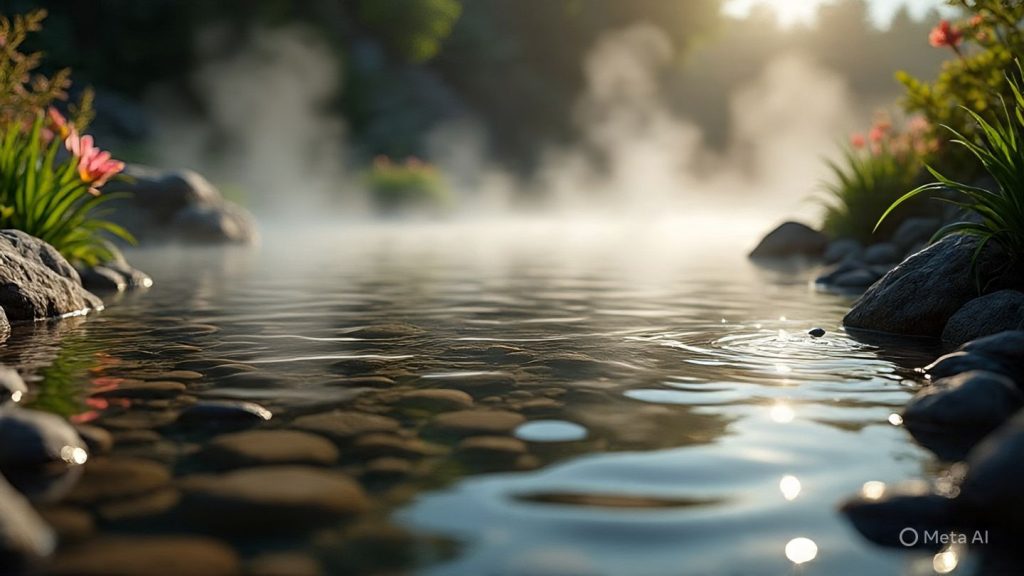
[Intro]
El agua me llama
Tibia y suave
Mi cuerpo se rinde
[Verse 1]
Entro despacio, paso a paso
Los pies encuentran la tibieza
Mis hombros bajan, mi respiración se alarga
El mundo afuera se desvanece
Solo queda este momento presente
Donde mi piel reconoce el calor
[Chorus]
Me dejo ir
Mi peso se vuelve liviano
Me dejo ir
Los músculos se ablandan
Me dejo ir
[Verse 2]
Las burbujas suben por mi espalda
Mis pensamientos se vuelven agua
No hay prisa aquí, no hay lugar que llegar
Solo este abrazo que me envuelve completa
Mi cuerpo flota, mi mente descansa
En esta pausa que tanto necesitaba
[Chorus]
Me dejo ir
Mi peso se vuelve liviano
Me dejo ir
Los músculos se ablandan
Me dejo ir
[Bridge]
Cierro los ojos
Escucho mi respiración
Lenta, profunda
El calor entra por cada poro
Me transformo
En algo más suave
[Chorus]
Me dejo ir
Mi peso se vuelve liviano
Me dejo ir
Los músculos se ablandan
Me dejo ir
[Outro]
Aquí puedo quedarme
En esta inmersión completa
Donde soy solo cuerpo
Donde soy solo calma
Murmullo del Río (River’s Whisper)
Theme: Listening to the river’s secrets, nature’s stories.
Lyrics (in Castellano Spanish) prompt:
Capture whispers of the river telling ancient stories—echoes of indigenous voices, timeless wisdom flowing.
Music prompt:
Incorporate field recordings of river water mixed with gentle flutes (quena) and soft charango plucks, layered with light AI-generated harmonics.
[Verse 1]
Me acerco al río en silencio
Sus aguas cantan historias
Voces que el tiempo llevó
En cada gota, memorias
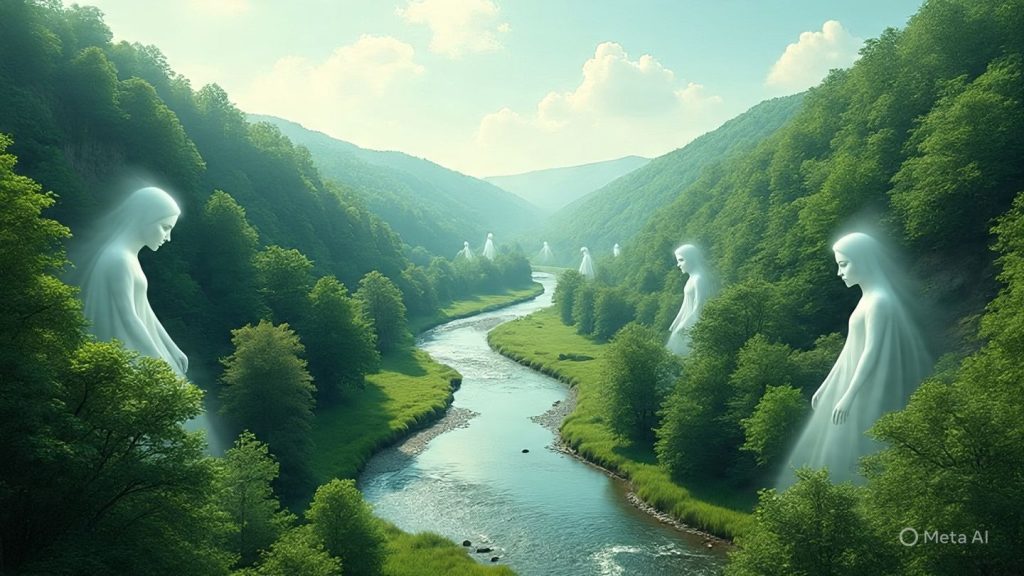
[Pre-chorus]
¿Puedes escuchar?
¿Puedes escuchar?
Lo que el agua trae
[Chorus]
Río, háblame
Río, háblame
De los que vinieron antes
Río, háblame
Río, háblame
Con tu voz de los ancestros
[Verse 2]
Mis manos tocan la orilla
Piedras pulidas, testigos
De pueblos que aquí vivieron
Sus cantos, aún conmigo
[Pre-chorus]
¿Puedes escuchar?
¿Puedes escuchar?
Lo que el agua trae
[Chorus]
Río, háblame
Río, háblame
De los que vinieron antes
Río, háblame
Río, háblame
Con tu voz de los ancestros
[Solo]
[Bridge]
En tu murmullo constante
Vive la sabiduría
Palabras en lenguas perdidas
Que fluyen todavía
[Chorus]
Río, háblame
Río, háblame
De los que vinieron antes
Río, háblame
Río, háblame
Con tu voz de los ancestros
[Outro]
Río, háblame
Río, háblame
(Siempre escuchando)
Río, háblame
Calma Interior (Inner Calm)
Theme: Meditation, finding peace within.
Lyrics (in Castellano Spanish) prompt:
Explore the stillness inside—a quiet mind, a centered soul, anchored in the moment.
Music prompt:
Minimalist piano motifs with sustained strings, subtle breath-like synth pads creating a serene atmosphere.

[Verse 1]
Hay algo que no puedes tocar
En el silencio que abraza
Un lugar que siempre está
Cuando todo se pasa
[Verse 2]
Te has perdido en el ruido afuera
Corriendo tras lo que se va
Pero aquí dentro te espera
La que nunca se irá
[Chorus]
Vuelve a casa, amor
A donde siempre fuiste tú
Vuelve a casa, amor
En la quietud
Ohhh… (Ahhh…)
[Verse 3]
Cada latido te recuerda
Que estás viva aquí y ahora
No necesitas que te entienda
El mundo que te ignora
[Bridge]
Cierra los ojos
Y respira hondo
Ya no hay prisa
En este fondo
Mmm… (Mmm…)
[Chorus]
Vuelve a casa, amor
A donde siempre fuiste tú
Vuelve a casa, amor
En la quietud
Ohhh… (Ahhh…)
[Outro]
Aquí donde nadie llega
Aquí donde todo es
Tu refugio, tu entrega
Tu ser…
(Tu ser…)
Mmm…
Fuego y Vapor (Fire and Steam)
Theme: The dual energy of the springs—warmth and transformation.
Lyrics (in Castellano Spanish) prompt:
Write about the contrast and balance of fire’s passion and steam’s mystery—how they fuel change.
Music prompt:
Dynamic textures with rhythmic percussion, crackling fire samples, swelling synths evoking rising steam.
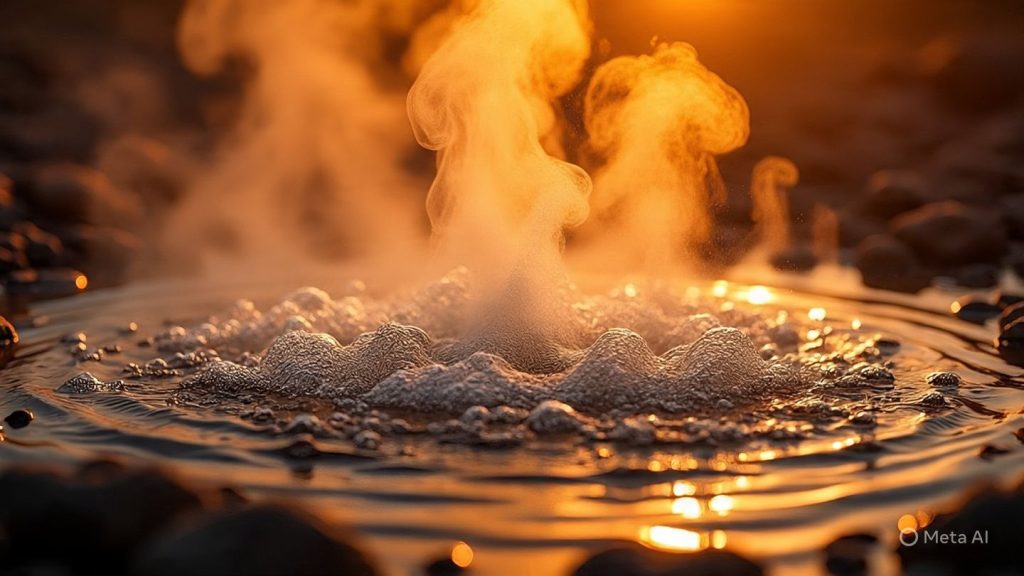
[Verse 1]
Agua tibia en mis manos
(ah-ah)
Calor que sube lento
Cambio en el aire
(la-la-la)
Piel que despierta
Vapor que baila
[Pre-Chorus]
Entre lo que era
Y lo que será
(oh-oh)
[Chorus – faster meter]
Fuego dentro
Vapor afuera
Soy nueva ahora
(sí, sí)
Fuego dentro
Calor que quema
Todo renace
(ah-ah-ah)
[Verse 2 – structure break]
Tú me dijiste:
“El agua cambia”
(mm-hmm)
Steam rises
Heat falls
Contrarios que se aman
(la-la-la-la)
[Random syllables section]
Ba-da-ba-da-boom
Sha-ka-ra-ka
Mm-pa-pa-pa
(eh-eh-eh)
[Bridge]
Temperatura sube
Corazón que late
(oh-oh-oh)
Transformación
En cada gota
[Chorus]
Fuego dentro
Vapor afuera
Soy nueva ahora
(sí, sí)
Fuego dentro
Calor que quema
Todo renace
[Outro]
Agua tibia
Cambio eterno
(la-la-la)
Soy fuego
Soy vapor
Voces Ancestrales (Ancestral Voices)
Theme: Honoring indigenous heritage and wisdom.
Lyrics (in Castellano Spanish) prompt:
Channel ancestral voices speaking through time—prayers, chants, and guidance.
Music prompt:
Incorporate layered vocal chants in Spanish and Guaraní, traditional percussion, and drones, processed to sound both ancient and timeless.
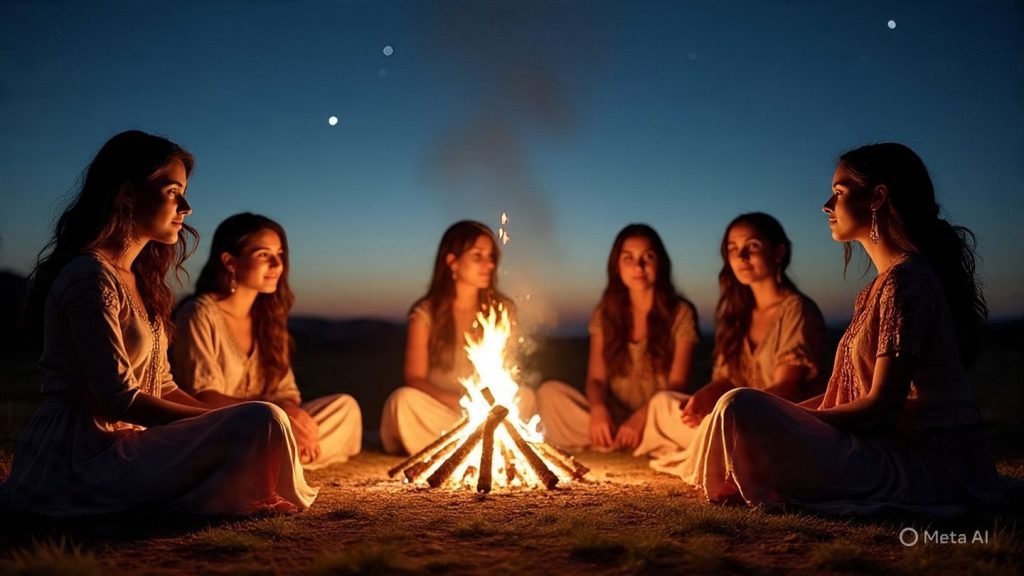
[Intro]
(Guaraní chant: “Che ru kuéra”)
Escucho
Escucho
Escucho voces
[Verse 1]
Hay algo en el viento
Algo que me llama
Desde muy adentro
Desde muy
[Pre-Chorus]
Y siento que hablan
Las que vinieron antes
Y siento que cantan
[Chorus]
Che sy, che sy, che sy
Madre de mi madre
Che sy, che sy, che sy
Dime lo que sabes
Che sy, che sy, che sy
Nunca me abandones
[Verse 2]
En cada latido
Vive tu memoria
En cada suspiro
Tu historia
[Pre-Chorus]
Y siento que hablan
Las que vinieron antes
Y siento que cantan
[Chorus]
Che sy, che sy, che sy
Madre de mi madre
Che sy, che sy, che sy
Dime lo que sabes
Che sy, che sy, che sy
Nunca me abandones
[Bridge]
(Guaraní: “Ore ru tenondé”)
Escucho
Escucho
Escucho voces
Escucho
Escucho
Escucho voces
[Chorus]
Che sy, che sy, che sy
Madre de mi madre
Che sy, che sy, che sy
Dime lo que sabes
Che sy, che sy, che sy
Nunca me abandones
[Outro]
Che sy, che sy, che sy
(Escucho voces)
Che sy, che sy, che sy
(Escucho voces)
Che sy, che sy, che sy
Renacer (Rebirth)
Theme: Emerging renewed and transformed.
Lyrics (in Castellano Spanish) prompt:
Express the feeling of rising anew, shedding old fears and embracing strength.
Music prompt:
Uplifting melodies on charango and quena with swelling harmonies and vibrant rhythmic patterns.
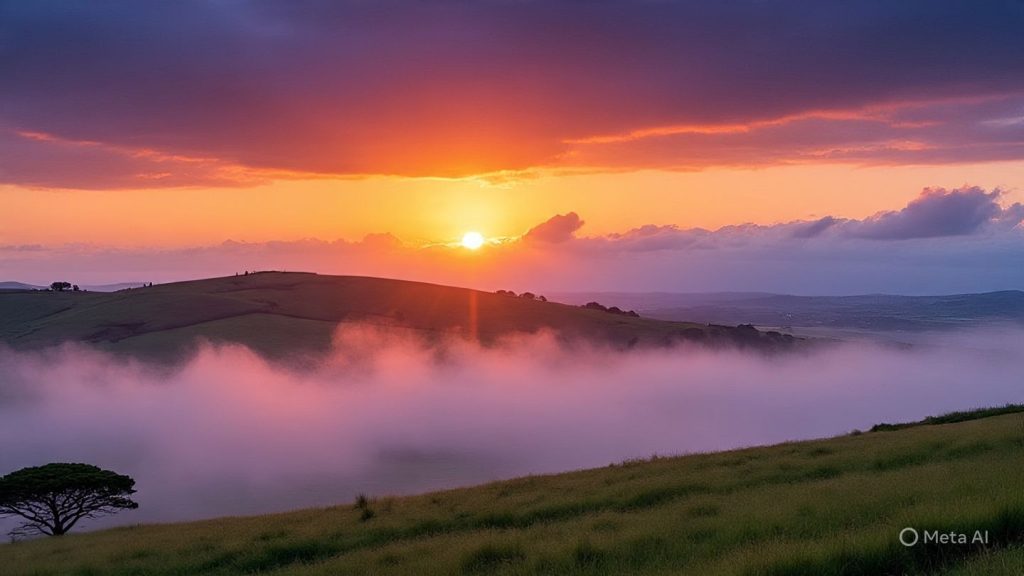
[Verse 1]
Solía caminar
Con los ojos hacia el suelo
Cada paso
Un peso más
Pero hoy
Hoy es diferente
La piel se siente
Nueva
[Chorus]
Ya no soy
Ya no soy la misma
Ya no soy
La que era ayer
Ya no soy
Ya no soy la misma
Algo cambió en mí
[Verse 2]
Las manos temblaban
Cuando hablaba tu nombre
Ahora mis labios
Se mueven libres
El aire
El aire me llena
Respiro
Respiro completo
[Chorus]
Ya no soy
Ya no soy la misma
Ya no soy
La que era ayer
Ya no soy
Ya no soy la misma
Algo cambió en mí
[Breakdown]
(La la la la)
Me levanto
(La la la la)
Me transformo
(Oh oh oh)
Soy más fuerte
(Oh oh oh)
[Bridge]
Tú me decías
Que no podría
Que no valía
Pero mírame ahora
Mírame ahora
Mírame
[Verse 3]
La ropa me queda
Diferente en el cuerpo
Camino con pasos
Más largos
Mi voz
Mi voz suena clara
Cuando digo
Tu nombre por última vez
[Chorus]
Ya no soy
Ya no soy la misma
Ya no soy
La que era ayer
Ya no soy
Ya no soy la misma
Algo cambió en mí
[Outro]
Ya no soy
Ya no soy
(La la la la)
Ya no soy
(Oh oh oh)
La misma
Eco del Alma (Echo of the Soul)
Theme: The soul’s resonance through nature and time.
Lyrics (in Castellano Spanish) prompt:
Describe the echo of one’s soul mingling with the landscape, creating a timeless bond.
Music prompt:
Ethereal synth pads layered with slow, reverberant guitar harmonics and soft choral voices.
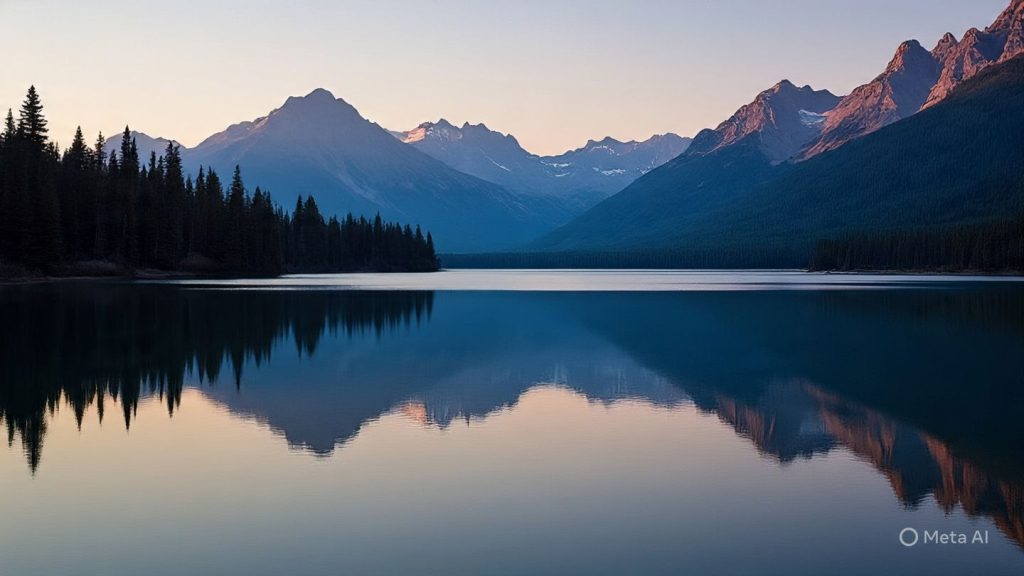
[Verse 1]
En las montañas donde el viento canta
Mi alma encuentra su verdad antigua
Entre las piedras que el tiempo encanta
Siento la vida que en mí se articula
[Chorus]
Soy la voz del río
Soy del monte el brío
Resonando en el tiempo
Alma y tierra sin tiento
[Verse 2]
Las hojas susurran mis pensamientos
En este bosque donde me descubro
Mis pasos bailan con los cimientos
De mi corazón bajo este conjuro
[Chorus]
Soy la voz del río
Soy del monte el brío
Resonando en el tiempo
Alma y tierra sin tiento
[Bridge]
Ah-la-ma-na-sa-ti
Vo-ra-le-mi-do-chi
Um-ba-ra-te-so-ni
[Vocalización etérea]
[Verse 3]
Regreso a las raíces que me sostienen
En cada latido late la tierra
Los ecos ancestrales me mantienen
Unida al pulso que nunca se encierra
[Final Chorus]
Soy la voz del río
Soy del monte el brío
Resonando en el tiempo
Alma y tierra sin tiento
[Outro]
En el silencio mi alma resuena
Como el eco que nunca se apena
Sendero de Luz (Path of Light)
Theme: Walking forward with clarity and hope.
Lyrics (in Castellano Spanish) prompt:
Tell of following a light-filled path—hope guiding the way through uncertainty.
Music prompt:
Bright piano arpeggios and gentle percussion with airy synths, creating a feeling of uplift and motion.

[Verse 1]
Te veo caminar por la mañana
Buscando algo que no puedes nombrar
Tus pasos lentos sobre tierra extraña
Pero hay algo que te va a guiar
Miras hacia arriba, el sol se asoma
Entre las nubes que se van
Y sientes que tu alma se transforma
Cuando la claridad te da su plan
[Pre-Chorus]
No sé si sabes lo que veo
En tu manera de avanzar
Hay una fuerza que yo creo
Te va a llevar
[Chorus]
Por el sendero de luz que brilla
En cada paso que das
Tu corazón ya no vacila
Sabes que no volverás atrás
(Ahh-ahh-ahh)
Por el sendero de luz
(Ahh-ahh-ahh)
Que brilla más
[Verse 2]
Te miro desde lejos mientras sigues
Tu camino lleno de fe
Aunque el viento a veces te fatigue
Sé que tu fuerza va a crecer
Las piedras bajo tus pies no importan
Cuando tienes esa visión
Las dudas que antes te cortaban
Se vuelven pura bendición
[Pre-Chorus]
No sé si sabes lo que veo
En tu manera de avanzar
Hay una fuerza que yo creo
Te va a llevar
[Chorus]
Por el sendero de luz que brilla
En cada paso que das
Tu corazón ya no vacila
Sabes que no volverás atrás
(Ahh-ahh-ahh)
Por el sendero de luz
(Ahh-ahh-ahh)
Que brilla más
[Bridge]
Y cuando llegue la tormenta
Y el camino se haga gris
Recuerda que la luz que llevas
Nunca se va, siempre está aquí
(Ooh-ooh-ooh)
Siempre está aquí
(Ooh-ooh-ooh)
[Solo]
[Acoustic guitar solo with soft humming]
(Mmm-mmm-mmm)
(Ahh-ahh-ahh)
[Chorus]
Por el sendero de luz que brilla
En cada paso que das
Tu corazón ya no vacila
Sabes que no volverás atrás
(Ahh-ahh-ahh)
Por el sendero de luz
(Ahh-ahh-ahh)
Que brilla más
(Ahh-ahh-ahh)
Por el sendero de luz
(Mmm-mmm-mmm)
Que brilla más
Círculo Eterno (Eternal Circle)
Theme: Cycles of life, water, and renewal.
Lyrics (in Castellano Spanish) prompt:
Reflect on the eternal cycles—birth, death, renewal—and the interconnectedness of all things.
Music prompt:
Looped rhythmic motifs, cyclical melodies on traditional instruments, layered with ambient textures.

[Verse 1]
Como el agua que baja del monte
Vuelves siempre al mismo lugar
En tus ojos veo el horizonte
Que se curva sin terminar
Cada gota que toca la tierra
Cada gota que toca la tierra
Se hace río, se hace mar
[Chorus]
Tú y yo, tú y yo
En el círculo que no se rompe
Tú y yo, tú y yo
Como la luna que se esconde
Para volver a nacer
Para volver a nacer
Tú y yo
[Verse 2]
Miro cómo las hojas caen
Y alimentan la raíz que crece
Tu silencio me dice verdades
Que mi alma reconoce
Cada paso que das en la arena
Cada paso que das en la arena
Otro paso lo borra y aparece
[Chorus]
Tú y yo, tú y yo
En el círculo que no se rompe
Tú y yo, tú y yo
Como la luna que se esconde
Para volver a nacer
Para volver a nacer
Tú y yo
[Bridge]
Respiras el aire que yo respiré ayer
Bebes el agua que mis lágrimas fueron
En este baile que no tiene fin
En este baile que no tiene fin
Somos lo mismo otra vez
[Chorus]
Tú y yo, tú y yo
En el círculo que no se rompe
Tú y yo, tú y yo
Como la luna que se esconde
Para volver a nacer
Para volver a nacer
Tú y yo
[Outro]
Como el agua que baja del monte
Vuelves siempre al mismo lugar
Vuelves siempre al mismo lugar
Alma de TATANKA (Soul of TATANKA)
Theme: The spirit of TATANKA as strength, resilience, and connection.
Lyrics (in Castellano Spanish) prompt:
Celebrate the power and grace of TATANKA’s spirit—bold, enduring, and nurturing.
Music prompt:
Strong, rhythmic drum patterns, powerful bass lines, and soaring melodic themes combining indigenous and modern sounds.
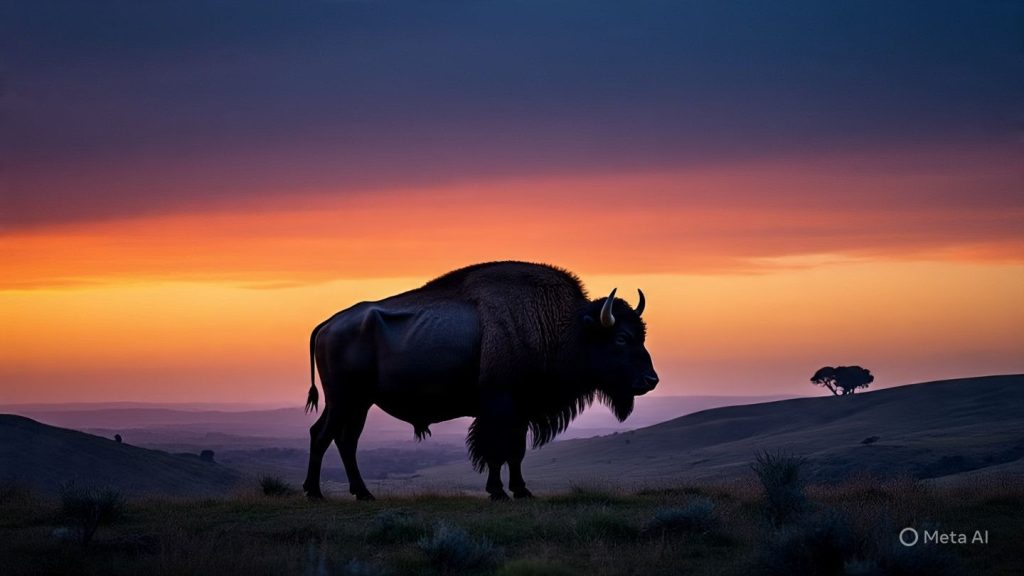
[Verse 1]
Siento tu fuerza
En mis raíces
Corre la sangre
De mis ancestros
[Chorus]
TATANKA vive
En mi corazón
Su alma fuerte
Mi protección
[Verse 2]
Pisan la tierra
Firmes y libres
Como la hierba
Que nunca muere
[Chorus]
TATANKA vive
En mi corazón
Su alma fuerte
Mi protección
[Bridge]
Soy la pradera
Soy el viento
Llevo adentro
Su aliento
[Chorus]
TATANKA vive
En mi corazón
Su alma fuerte
Mi protección
[Outro]
Me das valor
Me das honor
TATANKA
Mi interior
Regreso en Paz (Return in Peace)
Theme: Coming full circle, grounded, whole.
Lyrics (in Castellano Spanish) prompt:
Convey the calm and gratitude of returning home, transformed and at peace.
Music prompt:
Soft piano and strings fading into natural sounds of water and wind, gently closing the journey.
[Verse 1]
Te encuentro aquí donde todo empezó
Las piedras del camino ya no duelen
El viento lleva lo que se quedó
Y mis pasos por fin encuentran suelo
[Chorus]
Regreso en paz, regreso en paz
Con las heridas que sanaron ya
El río corre igual que siempre va
Pero yo no soy la que se fue
[Verse 2]
Te hablo ahora con voz serena
Sin prisa, sin miedo, sin dolor
La tierra húmeda, la luna llena
Me dicen que llegué a mi corazón
[Chorus]
Regreso en paz, regreso en paz
Con las heridas que sanaron ya
El río corre igual que siempre va
Pero yo no soy la que se fue
[Bridge]
Los pájaros cantan la misma canción
Pero mis oídos la escuchan distinto
El tiempo me enseñó la lección
De amar lo roto y lo bendito
[Verse 3]
Te agradezco el largo sendero
Que me trajo de vuelta a este lugar
Ahora sé que lo que más quiero
Siempre estuvo en mi forma de amar
[Chorus]
Regreso en paz, regreso en paz
Con las heridas que sanaron ya
El río corre igual que siempre va
Pero yo no soy la que se fue
[Outro]
(Regreso en paz)
(Regreso en paz)
Bonus Tracks
Bonus Track 1: Manantial (Source)
Instrumental
A shimmering, organic piece—a river’s birth, pure and hopeful, with flowing water, piano fragments, rustling reeds, and soft wind textures. No vocals, just the pulse of what starts everything.
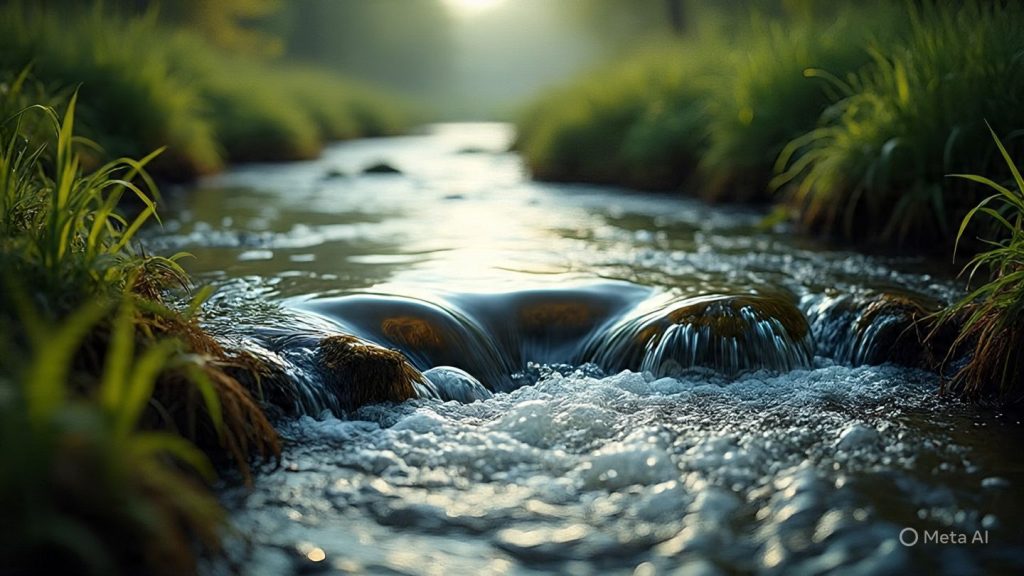
Bonus Track 2: Sueño del Bisonte (Bison’s Dream)
Instrumental/Spoken Word. Deep drones, heartbeat percussion, distant indigenous flute. Spoken word fragments in Spanish and Guaraní, a dreamspace connecting Tatanka’s lineage and cosmic meaning.
[Intro – Deep drones and heartbeat percussion]
[Distant indigenous flute begins]
[Verse 1]
You came to me in the space between sleep and waking
Where the old ones still roam free
I saw you running across plains that stretch beyond memory
Your hooves thunder like my pulse
[Chorus]
Tatanka, ancient one
Your spirit calls me home
Through generations of forgetting
Back to where we all belong
(Ohhhh, ohhhh)
The earth remembers your song
(Ahhhh, ahhhh)
[Verse 2]
Grandmother used to speak your name in whispered prayers
Before the roads carved up your trails
She said you carried our ancestors on your broad shoulders
Into the sky country where they wait
[Chorus]
Tatanka, ancient one
Your spirit calls me home
Through generations of forgetting
Back to where we all belong
(Ohhhh, ohhhh)
The earth remembers your song
(Ahhhh, ahhhh)
[Bridge – Spoken word fragments in Spanish]
“En mis sueños, corres libre…
Tatanka, guardián del viento…”
[Spoken word fragments in Guaraní]
“Mba’éichapa reiko… tatanka…”
[Verse 3]
In this dream you’re teaching me to listen
To the language underneath words
Where every blade of grass holds sacred conversation
And time moves in circles, not lines
[Final Chorus]
Tatanka, ancient one
Your spirit calls me home
Through generations of forgetting
Back to where we all belong
(Ohhhh, ohhhh)
The earth remembers your song
(Ahhhh, ahhhh)
We are still your children
(Mmmmm, mmmmm)
[Outro – Flute fades with heartbeat percussion]
[Extended vocalizations]
(Ohhhh, ahhhh, mmmmm)

Bonus Track 3: Canción del Crepúsculo (Twilight Song)
Female harmony, charango, fading sunlight, the edge of day into night. Reflection on cycles, transitions, and soft closure, distinct from the main “Regreso en Paz.”
[Verse 1]
Se apaga el día, crece la brisa
Luces doradas bailan al partir
Charango canta, piel estremecida
La noche llama, me dejo ir
[Chorus]
Entre el sol y la luna
Respiro el final
Vuelvo a ser niña
Tocando el umbral
Voces de luz, voces de sombra
Cantando el crepúsculo
Se va, se queda,
En mi pecho azul
[Verse 2]
Sombras alargan la última historia
Recuerdos suaves flotan sin peso
Abrazo el frío que trae memoria
En cada despedida hay comienzo
[Chorus]
Entre el sol y la luna
Respiro el final
Vuelvo a ser niña
Tocando el umbral
Voces de luz, voces de sombra
Cantando el crepúsculo
Se va, se queda,
En mi pecho azul
[Bridge / Harmony]
Ummm… ahhh…
Corazón entre dos fuegos
Junto al río, sigo y espero
Crepúsculo, susúrrame
No hay temor
[Final Chorus]
Entre el sol y la luna
Respiro el final
Vuelvo a ser niña
Tocando el umbral
Voces de luz, voces de sombra
Cantando el crepúsculo
Se va, se queda,
En mi pecho azul
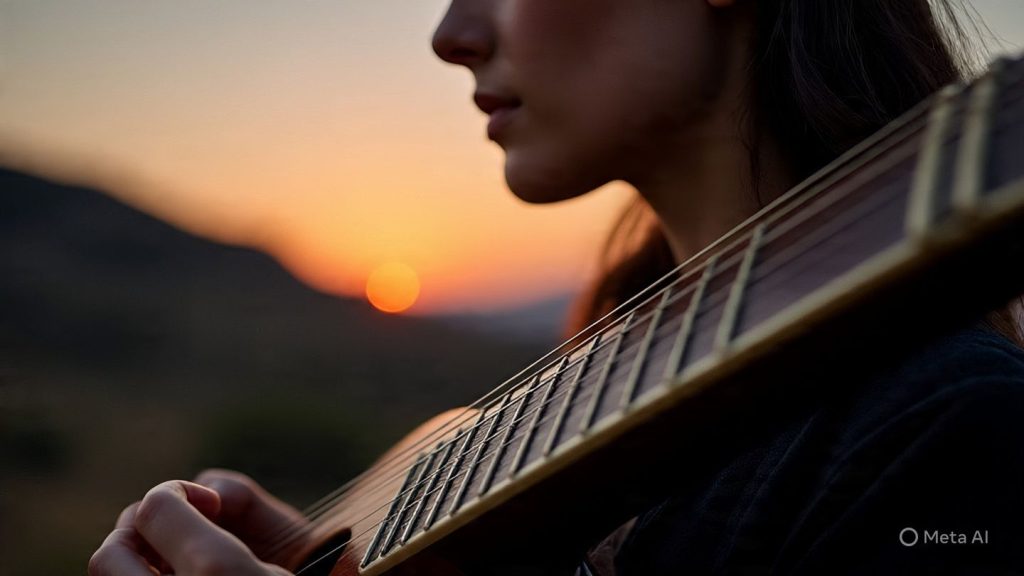
Bonus Track 4: Viento Errante (Wandering Wind)
Ambient, shifting winds. Feels like a blessing blown across the land, no words—just texture and spirit.
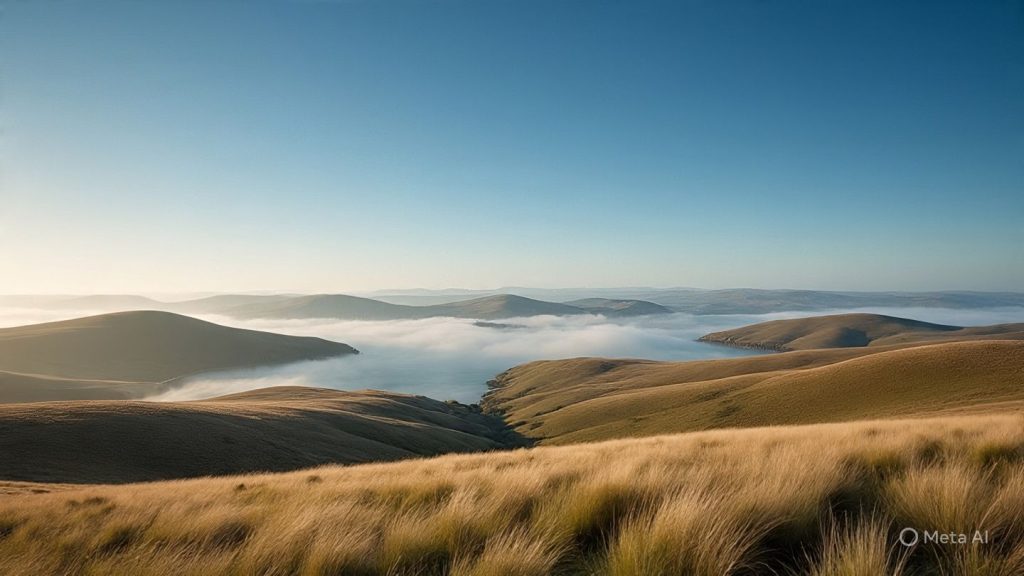
Bonus Track 5: Círculos en el Agua (Circles on Water)
Simple, looping vocal motif over soft percussion and natural water sounds. Could evoke gathering, ritual, and collective connection.
Círculos en el agua
Círculos de luz
Cantamos juntos
Círculos en el agua
Todo vuelve a la raíz
Círculos en el agua
Somos uno aquí
[Nonverbal humming, “na-na-na,” soft spoken whispers, and repeating]
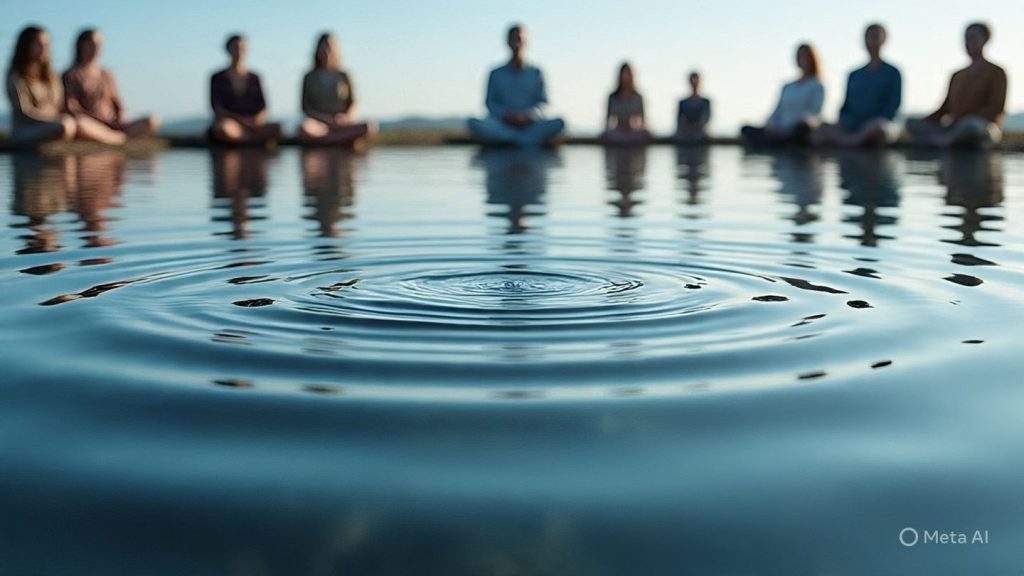
🎵 Termas del Arapey: A Musical Journey Through Healing Waters
The provided text introduces “Termas del Arapey: Aguas de la Renueva,” an AI-generated musical project by TATANKA inspired by Uruguay’s historic thermal springs. The project focuses on blending ambient sounds, indigenous voices, and AI collaboration to explore the cultural and ecological significance of Termas del Arapey. It emphasizes an ethical approach to art creation, advocating for community partnership, sustainable tourism, and respect for local knowledge and nature’s intrinsic value. The article outlines the creative process, from field recordings to AI-assisted sound design, and presents lyrics for several tracks that embody themes of arrival, immersion, ancestral wisdom, and renewal.
Briefing: TATANKA’s “Termas del Arapey: Aguas de la Renueva” Project
Executive Summary
“Termas del Arapey: Aguas de la Renueva” is an immersive musical project by TATANKA, blending ambient soundscapes, indigenous voices, and AI collaboration to capture the spirit of Uruguay’s Termas del Arapey hot springs. More than just an album, it aims to be a model for place-based art that fosters cultural dialogue, ecological awareness, and sustainable community development. The project emphasizes ethical engagement with local culture and environment, aligning artistic creation with principles of intrinsic natural value and community stewardship.
Main Themes & Key Ideas
1. Cultural and Ecological Significance of Termas del Arapey
- A Landscape of Memory, Ritual, and Renewal: Termas del Arapey is presented as more than just a thermal resort; it’s a “landscape of memory, ritual, and renewal that invites artistic response.” The springs are historically valued for their perceived therapeutic properties and as communal gathering places since their discovery in the early 1940s in Uruguay’s Salto Department.
- Sensitive Ecological Nodes: Ecologically, these springs are “sensitive nodes: they connect groundwater, river systems, and the immediate biological communities that depend on consistent temperature and water quality.” The project stresses the importance of respecting ecological boundaries and local knowledge to avoid “extractive approaches that take culture or nature as mere raw material for aesthetic projects.”
- Indigenous Influences and Biocentric Ethic: The project incorporates “Guaraní and other indigenous threads in the Río de la Plata region” to provide “an ethical and sonic vocabulary that can ground an album in deeper cultural resonance.” It advocates for a “biocentric ethic that recognizes nature’s intrinsic value,” a perspective championed by Uruguayan ecologists like Eduardo Gudynas, who states, “La Naturaleza vale por sí misma, independientemente de la utilidad o de los usos que le dé el ser humano” (“Nature is valuable in itself, independently of the utility or uses that human beings give it.”).
- Social Patterns and Responsible Tourism: The project acknowledges the social patterns surrounding the springs, including “pilgrimage-style visits at holidays, family traditions, and the seasonal rhythms of local businesses.” It promotes “slow, regenerative models” of tourism, such as “small-group listening experiences, seasonally timed residencies, and ecological interpretation walks led by trained local guides,” as opposed to mass-market events.
2. Creative Conception: Blending Traditional and AI Methodologies
- Hybrid Creative Approach: The album’s creation employs a “blended creative methodology: field recording, traditional instrumentation, human voice, and AI-assisted sound design.”
- Authenticity through Field Recordings: “Field recordings anchor the work in place—rain on leaves, the specific timbre of Arapey’s thermal runoff, local birds and human presence—granting immediate authenticity that no synthetic texture can fully replicate.”
- Traditional Instrumentation and Human Touch: Instruments like the charango and quena, played by “local or regionally informed musicians,” are used to “layer human technique onto these recordings and create dialogue between past and present.”
- AI as Co-creator, Not Replacement: AI tools are utilized as “co-creators: transforming, re-synthesizing, and suggesting harmonic structures that extend human imagination while preserving the character of the original material.” The guiding principle is to “let technology augment rather than replace embodied practice—AI should be a generous collaborator.”
- Ethical Vocal and Linguistic Choices: Lyrics and vocal elements require “intentionality” in language choices (Spanish, Guaraní, bilingual fragments) to reflect “local realities and the ethical commitments of the project.” Collaboration with “native speakers, cultural leaders, and local artists” is crucial for “linguistic accuracy and meaningful representation.”
- Transparent Production and Distribution: The project emphasizes “high-quality capture and transparent crediting—metadata and liner notes should list recording locations, dates, and local contributors.” AI-generated pieces must be “labeled and explained” for transparency and education. Modular releases (track essays, videos, social posts) are used for sustained engagement, all including “clear provenance information.”
3. Community, Tourism & Sustainable Futures
- Art as Catalyst for Local Development: Artistic projects like this are envisioned as catalysts for local development when structured as “partnerships rather than extractive showcases.” This includes “on-the-ground workshops for musicians and youth, joint performances with local ensembles, and limited-run artisan goods that return revenue to the community.”
- Embedding Local Benefits: “Embedding local hiring and capacity-building into the project’s budget—not as an afterthought but as a core line item—creates tangible benefits and reinforces ethical storytelling.”
- Partnerships for Sustainability: Sustainable practices require collaboration with “municipal authorities, conservation groups, and regional tourism boards.” This also involves “transparent ecological monitoring—baseline water-quality measures, visitor-impact studies, and clear waste management protocols.”
- Cultural Diplomacy and Replicable Model: The album can serve as “cultural diplomacy,” connecting Uruguay’s heritage with international discussions on “regenerative travel, indigenous rights, and creative technology.” By centering the community “in every stage—from conception to release and revenue allocation—the album becomes a replicable model for how place-based art can contribute to thriving local ecosystems.”
4. Thematic Journey of the Album
The album is structured as a pilgrimage or healing cycle, from arrival to transformation and return, reflected in its tracklist and lyrics:
- Llegada (Arrival): Anticipation and openness upon entering the sacred space.
- Inmersión (Immersion): Surrendering to the healing waters, finding inner peace.
- Murmullo del Río (River’s Whisper): Connecting with nature’s ancient stories and ancestral wisdom through the river.
- Calma Interior (Inner Calm): Meditation and finding stillness within oneself.
- Fuego y Vapor (Fire and Steam): Exploring the dual energies of warmth and transformation.
- Voces Ancestrales (Ancestral Voices): Honoring indigenous heritage, wisdom, and ancestral guidance, including Guaraní chants like “Che ru kuéra” (“my fathers”).
- Renacer (Rebirth): Emerging renewed, shedding old fears, and embracing new strength.
- Eco del Alma (Echo of the Soul): The soul’s resonance with the landscape, creating a timeless bond.
- Sendero de Luz (Path of Light): Walking forward with clarity, hope, and inner guidance.
- Círculo Eterno (Eternal Circle): Reflecting on life’s cyclical nature and interconnectedness.
- Alma de TATANKA (Soul of TATANKA): Celebrating the spirit of TATANKA – strength, resilience, and connection, echoing the words of Sitting Bull: “It is through this mysterious power that we too have our being, and we therefore yield to our neighbors, even to our animal neighbors, the same right as ourselves to inhabit this vast land.”
- Regreso en Paz (Return in Peace): Coming full circle, grounded, whole, and transformed.
Bonus Tracks extend these themes, with “Sueño del Bisonte (Bison’s Dream)” explicitly connecting the project to the “Tatanka” (bison) lineage and cosmic meaning, directly quoting Sitting Bull’s philosophy: “Let us put our minds together and see what life we can make for our children.”
Conclusion
“Termas del Arapey: Aguas de la Renueva” represents a holistic approach to artistic creation, demonstrating how music can serve as a powerful medium for celebrating place, honoring cultural heritage (especially indigenous voices), promoting ecological stewardship, and fostering sustainable community development. It champions a future where art, technology, and ethics are interwoven to create meaningful and responsible cultural experiences.
FAQ
What is the “Termas del Arapey: Aguas de la Renueva” project about?
The “Termas del Arapey: Aguas de la Renueva” project is an immersive musical album by TATANKA that blends ambient soundscapes, indigenous voices, and the spirit of Uruguay’s legendary hot springs. It’s conceived as a “musical journey through Uruguay’s healing waters,” aiming to honor the cultural and ecological significance of Termas del Arapey while fostering cultural dialogue, ecological awareness, and mindful tourism through art. The project explicitly states an August 11, 2025 release date for the full album plus bonus tracks.
How does the project integrate culture and ecology?
The project deeply integrates cultural and ecological themes by recognizing Termas del Arapey as a “landscape of memory, ritual, and renewal.” Culturally, it acknowledges the historical indigenous influences, particularly Guaraní threads, in the Río de la Plata region, seeking to incorporate indigenous phrases, chants, or consultation respectfully. Ecologically, it highlights the springs as “sensitive nodes” connecting groundwater, river systems, and biological communities, advocating for a biocentric ethic that values nature’s intrinsic worth. The project aims to model how art, science, and community stewardship can coexist and enrich one another.
What is TATANKA’s creative methodology for this album?
TATANKA employs a blended creative methodology for “Aguas de la Renueva.” This includes anchoring the work in place through field recordings (e.g., rain, thermal runoff, local birds, human presence), incorporating traditional instrumentation like the charango and quena, and featuring human voice with intentional language choices (Spanish, Guaraní, bilingual fragments). Crucially, it also uses AI tools as co-creators for transforming, re-synthesizing, and suggesting harmonic structures, ensuring technology augments rather than replaces embodied practice.
How does the project prioritize ethical engagement and community benefit?
Ethical engagement and community benefit are core to the project. This involves collaborating with native speakers, cultural leaders, and local artists, ensuring proper attribution, community permission, and transparent crediting in metadata and liner notes. For local development, it proposes on-the-ground workshops, joint performances, and artisan goods with revenue-sharing models. The project emphasizes embedding local hiring and capacity-building into the budget and promoting “slow, regenerative models” of tourism, with transparent ecological monitoring and alignment with conservation efforts.
What is the narrative flow or “pilgrimage” concept of the album?
The album is designed to have a narrative flow mirroring a healing cycle, which listeners can inhabit as a “pilgrimage.” This journey progresses through distinct themes and tracks: “Llegada (Arrival)” (anticipation, openness), “Inmersión (Immersion)” (surrender, relaxation), “Murmullo del Río (River’s Whisper)” (nature’s stories, ancestral wisdom), “Calma Interior (Inner Calm)” (meditation, peace), “Fuego y Vapor (Fire and Steam)” (transformation), “Voces Ancestrales (Ancestral Voices)” (indigenous heritage, guidance), “Renacer (Rebirth)” (renewal, shedding fears), “Eco del Alma (Echo of the Soul)” (soul’s resonance with nature), “Sendero de Luz (Path of Light)” (hope, clarity), and “Círculo Eterno (Eternal Circle)” (cycles of life, interconnectedness). The album concludes with “Regreso en Paz (Return in Peace),” signifying a grounded, whole return.
What role does AI play in the creation of the music, and how is transparency maintained?
AI tools are utilized as “co-creators” to transform, re-synthesize, and suggest harmonic structures, extending human imagination while preserving the original material’s character. TATANKA emphasizes that AI should augment rather than replace human practice. To maintain transparency, AI-generated pieces are explicitly labeled and explained, educating listeners about the hybrid nature of the art. This practice aims to strengthen trust and broaden the album’s appeal.
What is the significance of the “TATANKA” name and its mission?
While the direct source “Termas del Arapey” article doesn’t explicitly define the “TATANKA” name, other sections of the provided document (like the “Soul of TATANKA” track lyrics and the general website structure) indicate it represents strength, resilience, and connection. The mission includes “Music Meets Mission™” (ᗑᑌᔑᓵᐸ ᗑᗕᗕᐪᔑ ᗑᓵᔑᔑᓵᗝᐱ™) and encompasses values like DEI (Diversity, Equity, Inclusion), SDGs (Sustainable Development Goals), and the ethical use of AI. The inclusion of Sitting Bull quotes further suggests a connection to indigenous wisdom, respect for the land, and intergenerational well-being.
How does the project envision its broader impact beyond music?
The project envisions its broader impact as catalyzing local development and cultural diplomacy. It aims to support sustainable community development through partnerships, local hiring, skill exchanges, and revenue-sharing. It also seeks to frame tourism around “slow, regenerative models.” As cultural diplomacy, it aims to link Uruguay’s heritage with international conversations on regenerative travel, indigenous rights, and creative technology, amplifying local voices and attracting responsible partnerships through well-crafted storytelling on various platforms. By integrating art with measurable stewardship practices, it positions the album as both art and advocacy.
Termas del Arapey: Aguas de la Renueva – A Comprehensive Study Guide
Quiz: Short-Answer Questions
- What is the primary inspiration for the TATANKA project Arapey Echoes: Aguas de la Renueva?
- How does the project aim to incorporate indigenous influences from the Río de la Plata region into its musical work?
- Name two traditional instruments mentioned in the source material that are used in the album.
- How does the TATANKA project propose to use AI tools in the creative process, and what is its guiding principle for this use?
- Beyond music, what are two ways the project intends to contribute to community development and sustainable tourism in the Termas del Arapey region?
- According to the source, why is transparent crediting and labeling important for AI-generated pieces and other project elements?
- What ethical perspective from Uruguayan ecologists is highlighted as aligning with the project’s creative work?
- Describe the narrative flow or “sonic arc” that the album Arapey Echoes: Aguas de la Renueva aims to create for listeners.
- Which track on the album is designed to evoke the feeling of emerging renewed and transformed, shedding old fears?
- What is the overarching message or purpose that the TATANKA project hopes to achieve by blending art, ecology, and community stewardship?
Answer Key
- The primary inspiration for the TATANKA project Arapey Echoes: Aguas de la Renueva is Termas del Arapey, one of Uruguay’s oldest thermal resorts. The project is inspired by the springs’ cultural and ecological significance as a landscape of memory, ritual, and renewal.
- The project aims to incorporate indigenous influences by using Guaraní and other indigenous threads from the Río de la Plata region, providing an ethical and sonic vocabulary. This includes incorporating indigenous phrases, chants, or consultation, done with respect, attribution, and community permission, to move the project from appropriation toward partnership.
- Two traditional instruments mentioned are the charango and the quena. These are performed by local or regionally informed musicians to layer human technique onto field recordings.
- The TATANKA project proposes to use AI tools as co-creators, transforming, re-synthesizing, and suggesting harmonic structures that extend human imagination. The guiding principle is to let technology augment rather than replace embodied practice, helping reveal patterns and textures without erasing the human trace.
- Two ways the project intends to contribute to community development and sustainable tourism are through on-the-ground workshops for musicians and youth, and joint performances with local ensembles. Additionally, it plans for limited-run artisan goods that return revenue to the community and embedding local hiring into the project’s budget.
- Transparent crediting and labeling for AI-generated pieces and other project elements are important to educate listeners about the hybrid nature of the art and to strengthen trust. It also allows audiences to appreciate the ethical dimension of the work by knowing who recorded what, where, and under what cultural permissions.
- The ethical perspective from Uruguayan ecologists highlighted is a biocentric ethic, which recognizes nature’s intrinsic value. This aligns with creative work that seeks to celebrate rather than exploit the springs.
- The album Arapey Echoes: Aguas de la Renueva aims to create a narrative flow or “sonic arc” that mirrors the healing cycle. This arc progresses from arrival and immersion to rebirth and return, allowing listeners to inhabit the experience as a pilgrimage.
- The track designed to evoke the feeling of emerging renewed and transformed, shedding old fears, is “Renacer (Rebirth).” Its lyrics prompt focuses on expressing the feeling of rising anew and embracing strength.
- The overarching message or purpose is for the album to act as a bridge: between artists and place, between technology and tradition, and between visitors and the long-term health of the land. By holding culture, ecology, and community in conversation, it aims to model a path forward for place-centered art that heals as much as it celebrates.
Essay Format Questions
- Discuss the multi-faceted approach TATANKA takes in creating Arapey Echoes: Aguas de la Renueva. Analyze how the blending of field recordings, traditional instrumentation, human voice, and AI-assisted sound design contributes to the album’s stated goals of honoring place and fostering cultural dialogue.
- The study guide emphasizes the importance of ethical considerations in the Arapey Echoes project. Explore how TATANKA plans to address potential issues of cultural appropriation and extractive practices, particularly concerning indigenous voices and ecological resources. Provide specific examples from the text.
- “Termas del Arapey is more than a destination; it is a living muse.” Elaborate on this statement by discussing the cultural and ecological significance of Termas del Arapey as presented in the source material. How does the TATANKA project aim to reflect and respect this significance through its artistic and operational choices?
- Analyze the role of art, specifically music, as a catalyst for sustainable development and mindful tourism, as envisioned by the TATANKA project. What tangible and intangible benefits does the project anticipate for the local community, and how does it plan to ensure these benefits are durable?
- Examine the lyrical themes and musical prompts provided for the various tracks of Arapey Echoes: Aguas de la Renueva. How do these individual track concepts collectively contribute to the album’s overarching narrative of a “musical journey through Uruguay’s healing waters” and the theme of renewal?
Glossary of Key Terms
Termas del Arapey: One of Uruguay’s oldest thermal resorts, located in the Salto Department, serving as the central inspiration and setting for the TATANKA album.
Arapey Echoes: Aguas de la Renueva: The full title of the TATANKA project and album, signifying “Waters of Renewal” and the resonant connection to the thermal springs.
AudAI™Music: A proprietary term likely referring to TATANKA’s approach to incorporating Artificial Intelligence into music creation.
Biocentric Ethic: An ethical viewpoint, advocated by Uruguayan ecologists like Eduardo Gudynas, which recognizes nature’s intrinsic value independently of human utility or use.
Charango: A small, stringed Andean instrument, similar to a ukulele or mandolin, mentioned for its use in the album.
CLAES (Centro Latino Americano de Ecología Social): The Latin American Center of Social Ecology, an organization where Eduardo Gudynas, a Uruguayan biologist and political ecologist, is a senior researcher.
Cultural Diplomacy: The practice of using cultural exchange to foster mutual understanding and cooperation between nations or groups. The project aims to contribute to this by linking Uruguay’s heritage with international conversations.
Eduardo Gudynas: Uruguayan biologist, political ecologist, and senior researcher at CLAES, quoted for his perspective on nature’s intrinsic value.
Extractive Approaches: Practices that take culture or nature as mere raw material for aesthetic projects without proper respect, attribution, or reciprocity, which the project aims to avoid.
Field Recordings: Audio recordings made in an outdoor environment, capturing the natural sounds of a specific place (e.g., rain, water, birds) to ground the musical work in authenticity.
Guaraní: An indigenous language primarily associated with Paraguay, but with historical linguistic presences in parts of Uruguay. Its incorporation is a key part of the project’s ethical approach.
Quena: A traditional Andean flute, mentioned alongside the charango as an instrument used in the album.
Regenerative Models (Tourism): Tourism approaches focused on small-group experiences, seasonally timed residencies, and ecological interpretation walks, designed to enhance the well-being of local communities and ecosystems rather than strain infrastructure.
Río de la Plata region: The basin encompassing parts of Argentina, Bolivia, Brazil, Paraguay, and Uruguay, relevant for its shared indigenous influences.
Salto Department: The administrative division in northwestern Uruguay where Termas del Arapey is located.
Sonic Arc: The narrative flow or journey that the album’s music aims to create for the listener, mirroring the healing cycle from arrival to rebirth.
Sustainable Development Opportunities: Economic and social benefits derived from the project that are designed to be durable and support the long-term well-being of the local community and environment.
TATANKA: The organization behind the Arapey Echoes project, focused on blending music with mission, often incorporating AI and indigenous themes.
